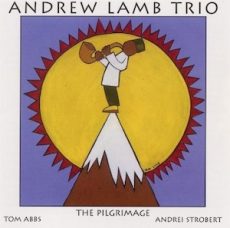
Daily Dose Of Jazz…
Andrew Lamb was born on August 26, 1958 in Clinton, North Carolina and raised in Chicago, Illinois and South Jamaica, Queens, New York. Having studied with AACM charter member Kalaparusha Maurice McIntyre, he came into New York City’s avant-garde community during the 1970s, becoming an active presence in the Bedford-Stuyvesant arts world and winning a Brooklyn Arts Council grant.
1994 saw him leading a session for Delmark, composing all the pieces on Portrait in the Mist, which featured vibraphonist Warren Smith, bassist Wilber Morris, and drummer Andrei Strobert. Lamb has since recorded duets with Warren Smith, and made a trio recording with Eugene Cooper and Andrei Strobert.
In 2003 released Pilgrimage on CIMP with Tom Abbs and Andrei Strobert, and with his group The Moving Formas released Year of the Endless Moment. As a leader he has recorded five albums beginning with 1994’s Portrait In The Mist, with his latest The Casbah Of Love in 2018 on Birdwatcher Records
Saxophonist and flautist Andrew Lamb, who leads his own ensembles and has been a part of Alan Silva as well as Cecil Taylor’s big bands, continues to perform and record.
More Posts: bandleader,flute,history,instrumental,jazz,music,saxophone
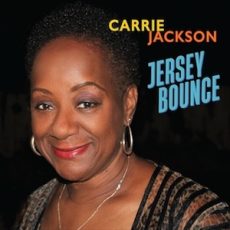
Daily Dose Of Jazz…
Carrie Jackson was born on August 25, 1959 in Newark, New Jersey and began her musical career when she was 6 years old singing in the children’s choir at Mount Calvary Baptist Church in Newark and is a product of the city’s Public School system, attending Peshine Avenue Elementary School, and Weequahic H.S.
She studied piano and voice with teacher, composer and arranger Howard “Duke” Anderson. Under his tutelage she learned the music business and became an accomplished seasoned singer as well as band leader. Coming into her own as a young adult, Jackson worked as a featured vocalist with Anderson’s Big Band. She also studied voice with Inez Mc Clendon, Nadine Herman and Winston Hughes at NCSA in Newark.
Carrie rekindles thoughts of America’s great jazz history, and attributes her vocal style of singing to her mentors, the Great Ladies of Jazz, Sarah “Sassy” Vaughan, Ella Fitzgerald, Billie Holiday, Dinah Washington, Nancy Wilson, and Carmen McRae. As a soloist, or with her Jazzin’ All Star Band, Carrie swings and performs the music of Duke Ellington, Count Basie, Lionel Hampton, Louis “Satchmo” Armstrong, Miles Davis, John Coltrane, Dizzy Gillespie, and musical selections songs from the Great American Song Book.
Jackson has been a featured artist in Women in Jazz, Ain’t Misbehavin’, and the musical review 49th Street Jazz, a tribute to Eubie Blake, Duke Ellington, Billie Holiday, Alberta Hunter. She is President/CEO of Mo-Jazz LLC, has toured both Europe and the United States and has fronted several orchestras.
Vocalist Carrie Jacksom continues to perform, tour and record with a variety of musicians, a list too long to document here.
More Posts: bandleader,history,instrumental,jazz,music,vocal
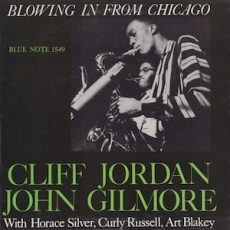
Resquisites
Blowing In From Chicago ~ Cliff Jordan & John Gilmore | By Eddie Carter
As a youngster discovering this music, I was always captivated by jazz’s unique and spontaneous nature, particularly the ‘blowing session’ or ‘jam session.’ These impromptu performances, where musicians control the flow of musical ideas from moment to moment, are a testament to the music’s excitement and unpredictability. Whether in a live setting at a club, concert, or jazz festival or captured in a studio session, jazz’s enthusiasm, vitality, and freedom are always present.
This morning’s choice from my library is an excellent LP from 1957 by two tenor saxophonists who made significant impressions in jazz, Clifford Jordan and John Gilmore. Their only album as co-leaders is titled Blowing In From Chicago (Blue Note BLP 1549), which signifies their roots in the vibrant jazz scene of Chicago. The quintet has an excellent rhythm section consisting of Horace Silver on piano, Curly Russell on bass, and Art Blakey on drums. My copy is the 1983 Pathé Marconi-EMI French Mono reissue, sharing the original catalog number. Before I proceed, let me state that this is not a DMM (Digital Metal Mastering) pressing.
The album opener, Status Quo, is a lively tune by John Neely, with both horns leading the charge through the uptempo melody. John rips into the opening solo, aggressively slicing through each verse like a sharp blade. Clifford joins him next in a short exchange, then takes off with a supercharged reading. Horace shifts into high gear on the third statement with a blazing swiftness that’s equally inspired and scintillating. Art engages in a brief conversation with both horns, then brings the solos to a close with an electric performance illustrating his incomparable artistry before the ensemble returns to the theme and quick stop. The first of two originals by Jordan follows.
Bo-Till slows the tempo to a laid-back pace with a Latin flavor. After a short introduction by the trio, the quintet states the theme collectively, stepping aside for Jordan, who makes a profound impression with a beautifully conceived statement displaying a great tone throughout. Silver gets into the groove next with an incredible, smooth reading, one of his best on the album. Gilmore delivers the closing choruses of the song proficiently with meticulous execution. Blakey constructs a concise comment during the ensemble’s end theme and close.
Blue Lights by Gigi Gryce is a catchy tune that opens with the quintet laying down a gorgeous medium beat on the theme and gives everyone a solo opportunity. John steps into the spotlight with a spirited performance. Horace follows with notes of undeniable pleasure in one of his most robust solos. Clifford weaves his way through the next musical improvisation with astounding skill. Curly puts together a condensed reading that walks for one chorus with solid bass lines. Art breezes into a straightforward interpretation that culminates into a splendid summation of the first side.
The second side gets underway with Charlie Parker’s Billie’s Bounce, which gives everyone except Russell a lengthy solo canvas on which to work. Blakey begins with a high-voltage introduction that sets the pace for the following fiery quintet theme. Clifford packs a mighty punch on the opening statement with a fire-breathing showcase, preceding John, who exhibits a robust attack on the subsequent interpretation with extremely hot choruses. Horace takes over next for a scintillating performance, taking his piano on a sizzling uptempo ride. Both horns exchange a few riffs with Art before the drummer gives an unaccompanied propulsive exhibition into the ending theme.
Clifford’s second original is a blues titled Evil Eye, which eases the throttle back from the previous burner to a medium pace with a collective melody by the quintet. Jordan opens the solos with a series of choruses that are smooth and well-structured. In the following presentation, Gilmore shows that he can also interpret blues with plenty of soul, which develops nicely. Silver delivers a lightly swinging performance that expresses pleasure as he moves masterfully through each chorus. Both horns return to share a few more thoughts. Blakey makes a short statement preceding the theme’s reprise and finish.
The album’s final track is Everywhere, a mid-tempo original by Horace Silver, which I believe made its debut on this album. It opens with a simple opening melody by the ensemble in unison, and the solo order is Gilmore, Jordan, Silver, and Blakey. John takes the stage first with a bewitchingly delightful opening statement. Clifford makes his case with a captivating contribution that moves sprightly alongside the rhythm section’s groundwork drive. Horace takes over next, communicating his points well with a pronounced beat. Art puts the joyous exclamation point on the song and album with a compelling statement that leads the group back to the ending theme and close.
Clifford Jordan recorded three albums for Blue Note; the other two LPs are Cliff Jordan and Cliff Craft. He played and recorded with many elite jazz musicians, including Charles Mingus and Max Roach. Clifford also enjoyed success recording as a leader and sideman, and in my opinion, his discography is well worth investigating. He remained in demand over the next three decades and toured worldwide. His final album was a 1992 live recording at Condon’s in New York City for Milestone, where he performed with his big band, Down Through The Years. He lost his battle against lung cancer on March 27, 1993, at age sixty-one.
Blowing In From Chicago was the first of three appearances on Blue Note by John Gilmore. The other two were as a sideman on two of Andrew Hill’s LPs, Andrew and Compulsion. He began playing the clarinet at fourteen, then pursued a musical career after a four-year stint in the United States Air Force, where he took up and played the tenor saxophone. He began a forty-year term with Sun Ra in 1953 and recorded for various labels with his group, Sun Ra Arkestra. During this time, Gilmore also toured with The Jazz Messengers and recorded with Paul Bley, Andrew Hill, Pete LaRoca, McCoy Tyner, and Dizzy Reece. After Sun Ra’s death on May 30, 1993, Gilmore led the Arkestra for two years before his death from emphysema on August 20, 1995, at age sixty-three.
As for the music on Blowing In From Chicago, it’s fantastic, as are the solos on each track, and the sound quality of this reissue is exemplary. The instruments deliver an excellent soundstage throughout the treble, midrange, and bass that places your sweet spot in the studio with the musicians. It’s a cut above the average debut album and a title I recommend as a terrific addition to any jazzophile’s library, particularly if you’re a hard-bop fan or love a good “blowing session” or “jam session.”
~ Andrew (Blue Note BLP 4203/BST 84203), Cliff Jordan (Blue Note BLP 1565), Cliff Craft (Blue Note BLP 1582/BST 81582), Compulsion (Blue Note BLP 4217/BST 84217), Down Through The Years (Milestone MCD-9197-2) – Source: Discogs.com
~ Billie’s Bounce – Source: JazzStandards.com
~ John Gilmore, Andrew Hill, Clifford Jordan – Source: Wikipedia.org
© 2024 by Edward Thomas Carter
More Posts: bandleader,choice,classic,collectible,collector,history,instrumental,jazz,music,saxophone
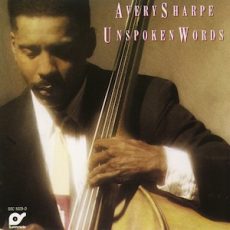
Daily Dose Of Jazz…
Avery George Sharpe was born on August 23, 1954 in Valdosta, Georgia. His first instrument was the piano, which he started playing at eight years old. His mother was a pianist and church choir director and gave him lessons. In his youth he studied the accordion, electric bass, then double bass at the University of Massachusetts, Amherst. He studied double bass with Reggie Workman, and also studied with Max Roach, Archie Shepp, Horace Boyer and Fred Tillis.
He came to prominence under the tutelage of Archie Shepp and Art Blakey, played as a sideman with Yusef Lateef, Ricky Ford, and Joe Ford, among others. As an educator he is Artist Associate and Jazz Coach at Williams College. In addition he serves as Faculty Advisor for the Williams Gospel Choir, and has an affiliation with the Africana Studies department.
In 2004, he wrote a musical portrait for the stage for Chamber Music, and was featured with Jasmine Guy in the stage production of Raisin’ Cane. His composition January in Brazil is on McCoy Tyner’s Grammy winning big band album Journey.
Double and electric bassist, composer, educator and founder of the artist-owned record label, JKNM Records Avery Sharpe, who has released 14 albums as a leader and 40 as a sideman, continues to utilize all of his talents.
More Posts: bandleader,bass,composer,educator,history,instrumental,jazz,music
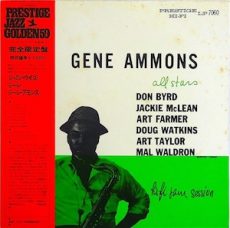
Requisites
Jammin’ With Gene ~ Gene Ammons All-Stars | By Eddie Carter
A few evenings ago, after dinner, I was enjoying a good book when I suddenly craved some jazz with a tenor sax. That decision led me to today’s discussion. Upon going to the shelf, I rediscovered one of my favorite records by the Gene Ammons All-Stars. “Jammin’ With Gene” (Prestige PRLP 7060) was the tenor saxophonist’s third release as a leader when it hit the stores in 1956. It was also the second of seven blowing session albums he recorded forthe label. The personnel for this date is a stellar supporting cast: Art Farmer and Donald Byrd on trumpet, Jackie McLean on alto sax, Mal Waldron on piano, Doug Watkins on bass, and Arthur Taylor on drums. My copy of this album is the 1977 Victor Musical Industries Japanese mono reissue (Prestige VIJ-5039).
The first side opens with the title tune, Jammin’ With Gene, by Gene Ammons. From the start, the septet establishes a cohesive atmosphere, with the front line delivering the melody in tight, harmonious unison. Gene takes the lead solo, slipping into a soulful groove that floats effortlessly over the rich foundation provided by his fellow musicians. Donald steps in next, his interpretation unfolding with increasing intensity, from a gentle warmth to a robust climax, also with the front line shadowing him. Art and Jackie then state their cases in the subsequent two readings, each presentation adding a fresh layer of expression. Mal wraps things up with a laid-back performance, which is followed by the group circling back to their unified closing chorus.
The album’s only standard, We’ll Be Together Again, by Carl Fischer and Frankie Laine, opens gently as Gene, Mal, and Doug’s introduction segues into a subtle, slow-moving melody by Ammons. Gene then steps forward, launching the opening statement with a smooth, relaxed swing. Art follows, infusing the second reading with vivacious energy, and then Jackie picks up the rhythm with lively, enthusiastic lines. Donald delivers the goods on the following interpretation, after which Mal ushers in a flowing groove leading into Gene’s closing passage back into a ballad tempo for the group’s graceful finish.
The album’s finale, Not Really The Blues by Johnny Mandel, is a lively, up-tempo tune that takes off with a brisk melody from the whole ensemble. Donald leads off, delivering a spirited statement that sets the pace, then Jackie adds some bite with sharp, energetic phrasing. Art keeps the momentum high with his vigorous contribution, while Gene steps in with high-octane in the next solo. Mal keeps things simmering with his smooth piano work, paving the way for a rapid-fire exchange among Farmer, Byrd, McLean, and Ammons. The excitement builds as Donald, Jackie, Art, and Gene trade choruses in a heated musical conversation, driving the group toward a swift and exhilarating exit.
Bob Weinstock supervised the session, and Rudy Van Gelder was responsible for the recording duties. This reissue’s sound quality is a delight to hear, with a vivid soundstage that transports the musicians to the sweet spot in your listening room. If you’re a Gene Ammons fan and appreciate a good bop album, I happily recommend “Jammin’ With Gene” by the Gene Ammons All-Stars for a spot in your library. It’s an underrated, but excellent album that every tenor sax enthusiast should seek out on their next record-shopping trip!
~ We’ll Be Together Again – Source: JazzStandards.com
© 2025 by Edward Thomas Carter
More Posts: choice,classic,collectible,collector,history,instrumental,jazz,music,saxophone



